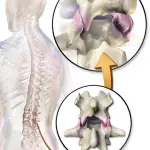Inversion Table
The purpose of inversion tables, which are padded tables that you can buckle yourself into and tilt either partially or totally upside down, is to relieve pain from several spine problems, including back discomfort.
Most tables are made to support your back even if you stand on them for a bit with legs hanging below you. However, an inversion table may also offer a chance for exercise, depending on the type and the manufacturer. Some people choose a model that allows them to perform exercises like torso rotations and stomach crunches.
How Do They Work?
Inversion tables are designed to extend the spine and increase the amount of space between the vertebrae by alleviating the pressure that gravity typically applies to the spinal disks and nerve roots. To achieve this, the user’s body is turned upside down, and they are allowed to hang upside down from the table.
How to Use an Inversion Table
Relax and lie back down to protect your safety when utilizing an inversion table. You can lean back while lying flat on the ground, so your head is lower than your chest.
Make sure you are using an inversion table either under the direction of a licensed physical therapist or with the present. It is preferable to perform this under the supervision of a physical therapist who can direct and supervise you.
Inversion treatment is not recommended for everyone. Those with compromised neurological systems, weakened vascular systems, or other chronic diseases might not profit from it.

Inversion Therapy
Inversion therapy may be helpful for those suffering from persistent lower back discomfort, poor circulation, sciatica, and scoliosis.
Inversion treatment proponents assert that the method can treat and prevent back issues. They also think that the benefits of stretching and circulation can aid in preventing linked health problems in the future. However, research on the effectiveness of inversion therapy is conflicting.
Theoretically, inversion exercises should benefit the spine by increasing the amount of fluid surrounding the spinal discs and clearing waste from the spine, reducing inflammation, and boosting blood flow to the surrounding muscles.
Inversion tables are popular among athletes and celebrities for several purposes, including fitness, rehabilitation, and beauty. Although there has yet to be any substantial research on the health advantages of inversion tables, several minor studies have shown they might be. You can stretch your spine and relieve back discomfort by hanging upside down as part of inversion treatment. According to the hypothesis, the body’s gravity is changed, relieving strain on the back and giving the spine traction.
Potential Risks of Inversion Therapy
Inversion therapy is seen as harmful for people who have particular conditions. When you’re upside down, your heart rate and blood pressure increase and decrease. Additionally, your eyes are under a lot of strain. Your doctor might not recommend inversion exercises if you have specific conditions or illnesses, such as conjunctivitis, ear infections, glaucoma, or cerebral sclerosis. These ailments include cardiovascular problems like high blood pressure, stroke, heart disease, and bone and joint illnesses like osteoporosis, herniated disks, fractures, or spinal injuries.
The use of coagulating medications, pregnancy, retinal detachment, and obesity are some factors that could cause issues. It takes time to adapt to inversion therapy. To get used to the method, it is best to start with smaller steps and work your way up from one-minute sets to three. Adverse side effects, including dizziness or tired muscles, might be lessened.
Should I Use An Inversion Table If I Am Obese?
For inversion tables, there are various height and weight constraints and the question can you lay on your stomach on an inversion table. For your safety, the inversion table needs to fit your body size well. Before you buy one, be sure to check out all of its features carefully. Additionally, hanging upside down is dangerous if you are obese or overweight. Always get medical advice before starting inversion therapy. If these limitations are not followed, there is a greater probability that the user may fall or that the table will malfunction, both of which raise the danger of further harm.
Although they can support up to 600 pounds, inversion tables usually have a weight limit of 300 pounds. If you are unable to find an inversion table that fits your body size, it is suggested by experts that you speak with your physical therapist or doctor to see if they can recommend a model that works.






